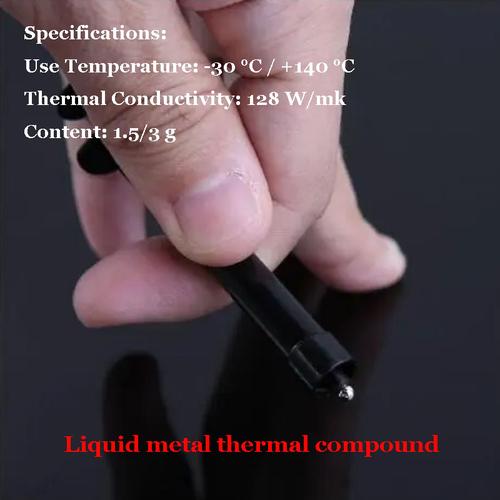Is It Ok to Replace Liquid Metal with Thermal Paste?
When it comes to maintaining your computer’s performance, the thermal management system plays a crucial role. One of the key components of this system is the thermal paste, which is used to fill the microscopic gaps between the CPU and the heatsink. However, some enthusiasts might wonder if it’s okay to replace liquid metal with thermal paste. Let’s delve into this topic and explore the pros and cons of both options.
Understanding Thermal Paste
Thermal paste, also known as thermal grease or TIM (Thermal Interface Material), is a compound designed to improve the thermal conductivity between two surfaces. It fills in the microscopic gaps between the CPU and the heatsink, allowing for better heat transfer. Thermal paste is available in various types, including ceramic, metallic, and phase-change materials.

Understanding Liquid Metal
Liquid metal, on the other hand, is a liquid metal compound that can be applied between the CPU and the heatsink. It offers superior thermal conductivity compared to traditional thermal paste, making it an attractive option for enthusiasts looking to maximize their system’s cooling performance.
Is It Okay to Replace Liquid Metal with Thermal Paste?
Now, let’s address the main question: Is it okay to replace liquid metal with thermal paste? The answer is not straightforward and depends on several factors.
1. Compatibility
Before making any changes, it’s essential to ensure that your CPU and heatsink are compatible with the chosen thermal material. Some CPUs and heatsinks may have specific requirements or limitations regarding the type of thermal material used. Check the manufacturer’s recommendations to avoid any potential issues.
2. Application Process
Applying thermal paste is generally easier than working with liquid metal. Thermal paste comes in a tube, making it easy to apply a consistent and controlled amount. In contrast, liquid metal requires more precision and experience to apply correctly. If you’re not confident in your application skills, it might be safer to stick with thermal paste.

3. Risk of Leaks
Liquid metal has a higher risk of leakage compared to thermal paste. If the liquid metal comes into contact with any electrical components, it can cause short circuits and damage your system. While leaks are rare, they can occur, especially if the liquid metal is not applied correctly or if the system is subjected to high temperatures.
4. Longevity
Thermal paste generally has a longer lifespan than liquid metal. While liquid metal can last for several years, thermal paste may need to be reapplied after a few years. This factor should be considered when deciding whether to replace liquid metal with thermal paste.
5. Performance
In terms of performance, liquid metal offers superior thermal conductivity compared to thermal paste. However, the difference in performance might not be noticeable in everyday use. If you’re looking for the absolute best cooling performance, liquid metal might be the way to go. However, for most users, the difference in performance between liquid metal and thermal paste is negligible.
Conclusion
In conclusion, it is possible to replace liquid metal with thermal paste, but it’s essential to consider the factors mentioned above. If you’re looking for a safer and more straightforward option, thermal paste is the way to go. However, if you’re willing to take on the additional risk and potential benefits of liquid metal, it can be a viable alternative. Always ensure compatibility and follow the manufacturer’s recommendations to avoid any potential issues.
| Factor | Thermal Paste | Liquid Metal |
|---|---|---|
| Compatibility | High | Medium |
| Application Process | Easy | Difficult |
| Risk of Leaks | Low | High |
| Longevity | Longer | Shorter |
| Performance | Good | Excellent |












